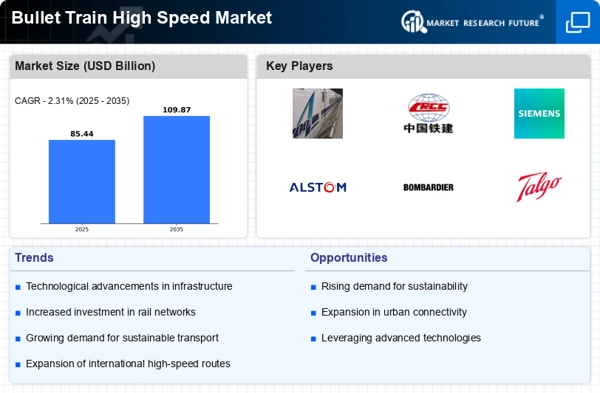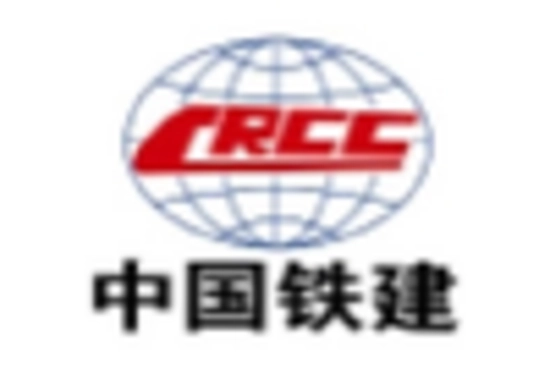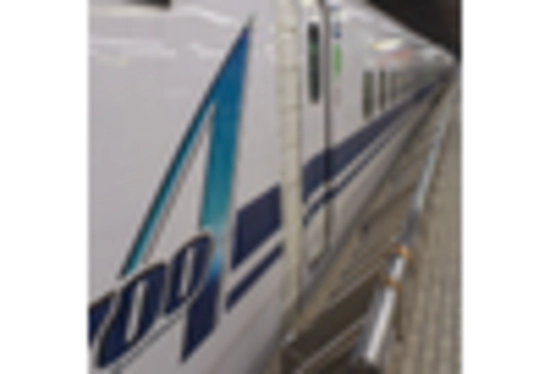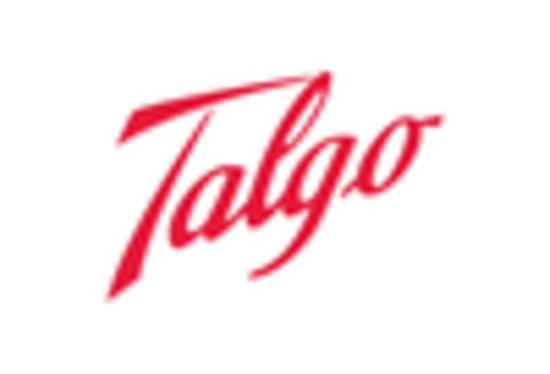Rising Urbanization
The Bullet Train High Speed Market is experiencing a surge in demand due to increasing urbanization. As populations in urban areas expand, the need for efficient transportation solutions becomes paramount. High-speed rail systems offer a viable alternative to congested roadways and overburdened airports. According to recent data, urban areas are projected to house over 68% of the world's population by 2050, necessitating innovative transport solutions. This trend indicates a growing market for bullet trains, as they can significantly reduce travel times between major urban centers. Furthermore, the Bullet Train High Speed Market is likely to benefit from government investments aimed at enhancing public transport infrastructure, thereby facilitating smoother commutes and promoting economic growth.
Technological Innovations
Technological innovations are transforming the Bullet Train High Speed Market, leading to enhanced efficiency and safety. Advances in rail technology, such as magnetic levitation and improved signaling systems, are enabling trains to operate at higher speeds with greater reliability. The integration of smart technologies, including real-time tracking and automated systems, is also enhancing the passenger experience. As of 2025, the market is witnessing a shift towards more energy-efficient trains, which could reduce operational costs and environmental impact. This technological evolution not only attracts investment but also positions the Bullet Train High Speed Market as a leader in sustainable transportation solutions.
Increased Intermodal Connectivity
The Bullet Train High Speed Market is benefiting from increased intermodal connectivity, which enhances the overall efficiency of transportation networks. High-speed rail systems are being integrated with other modes of transport, such as buses, subways, and airports, creating seamless travel experiences for passengers. This interconnectedness is particularly appealing in densely populated regions where time efficiency is critical. As of 2025, several countries are developing transport hubs that facilitate easy transfers between high-speed trains and other transport options. This trend is likely to drive growth in the Bullet Train High Speed Market, as it promotes the use of rail travel as a primary mode of transportation.
Government Initiatives and Funding
Government initiatives play a crucial role in the Bullet Train High Speed Market. Many countries are prioritizing high-speed rail projects as part of their transportation policies, recognizing the potential for economic development and environmental benefits. For instance, funding allocations for high-speed rail projects have increased, with several nations committing billions to develop new lines. In 2025, it is estimated that investments in high-speed rail infrastructure could exceed 100 billion USD, reflecting a strong commitment to modernizing transport systems. These initiatives not only enhance connectivity but also stimulate job creation in construction and related sectors, further driving the growth of the Bullet Train High Speed Market.
Environmental Concerns and Sustainability
The Bullet Train High Speed Market is increasingly influenced by environmental concerns and sustainability initiatives. As awareness of climate change grows, there is a pressing need for greener transportation alternatives. High-speed trains produce significantly lower carbon emissions compared to cars and airplanes, making them an attractive option for eco-conscious travelers. In 2025, the industry is expected to see a rise in demand for trains that utilize renewable energy sources, further aligning with global sustainability goals. This shift not only enhances the appeal of the Bullet Train High Speed Market but also encourages governments to invest in rail infrastructure as part of their climate action plans.


















Leave a Comment